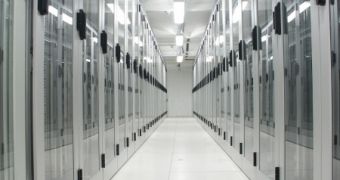Moore's Law was first used to predict the number of transistors that can fit on an integrated circuit, and argued that their number would grow exponentially over time. Indeed, current trends show that twice as many transistors can be placed on the same circuit in an interval of approximately 18 months. Now, newly-published research hints at the fact that the growth of the Internet follows the same trend, with experts saying that the World Wide Web will continue to increase its size by 100 percent every 5.32 years.
Understanding how a network grows, develops and expands is crucial to ensuring that its calibration is just right, in that it will always work at optimum parameters. And although the Internet is very popular nowadays, and continues to expand its “fan base,” its position could easily be compromised by low data transfer speeds and other such issues, which are endemic to networks that are not properly set up, or that have been artificially expanded beyond their capacity.
In the study, published in the New Journal of Physics, researchers led by Guo-Qing Zhang from the Institute of Computing Technology at the Chinese Academy of Sciences, tried to determine the trend in WWW growth over the past years. So, they recorded data between December 2001 and December 2006 and analyzed communication nodes for intermittent periods of 6 months. They learned that the Internet indeed follows Moore's exponential law of growth, but, in addition, also found how the web evolves and the differences between its components.
Basically, the team was able to conclude that the core of the Internet, which is made up of less than 0.3 percent of all nodes currently online, is relatively stable, while the most activity is recorded at the periphery. Systems in these areas evolve and expand constantly, creating new nodes and edges to the overall system on an almost daily basis.
“Many models are proposed to predict the evolutionary properties of the Internet in the future, and to our knowledge, these models assume that the central part and the periphery obey the same evolving mechanism, and the maximal connectivity of the Internet should grow very fast,” Zhang told PhysOrg.
“Here we show that the maximal degree (connectivity number) as well as the size of the central part is relatively stable, and the explosion is mainly contributed by the periphery. These findings indicate a completely different picture against the previous works, and can be considered as important criteria for modeling the Internet,” he added, noting that the research proved the fact that the core and the marginal regions of the Internet evolve using different mechanisms, which naturally implies different speeds.

 14 DAY TRIAL //
14 DAY TRIAL //